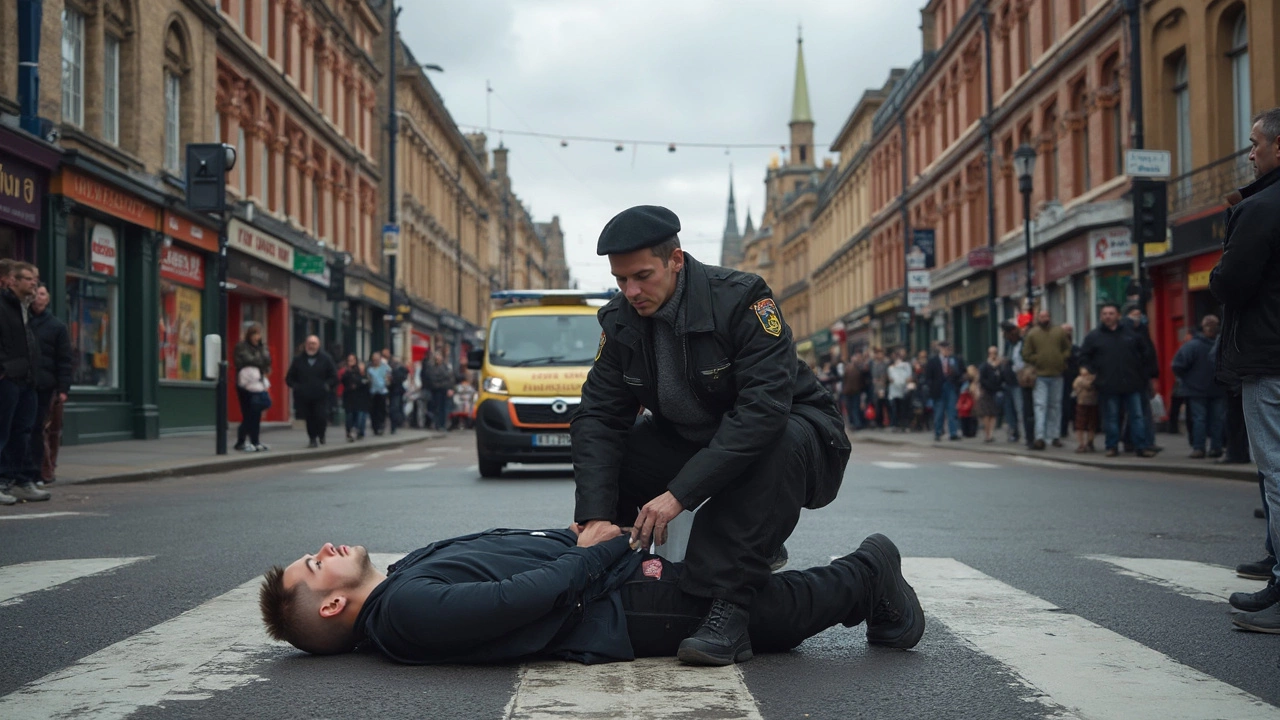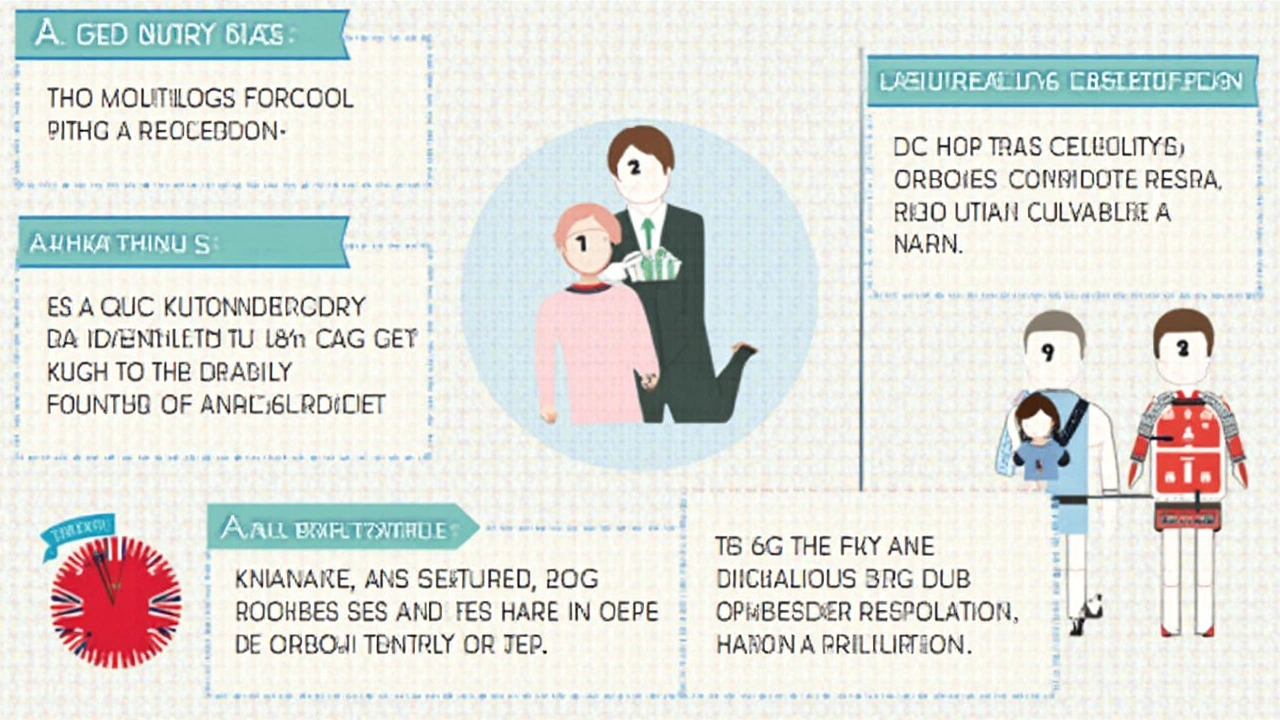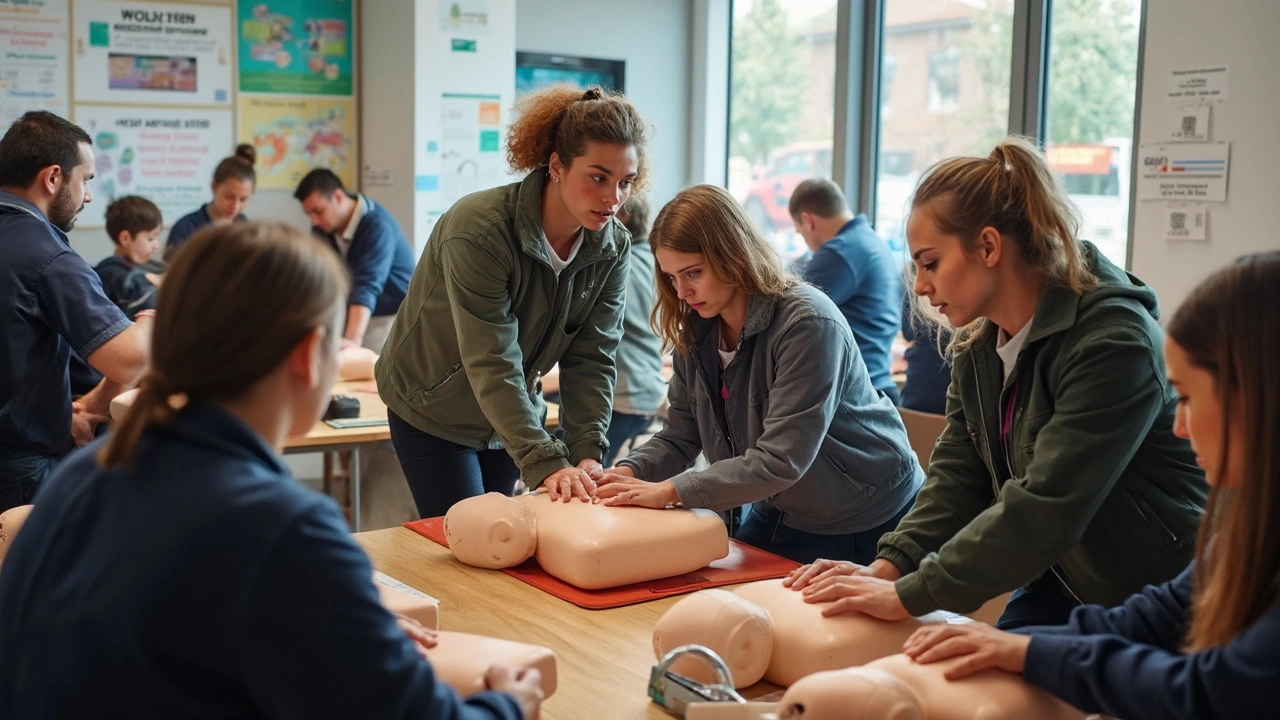Alright, picture this: someone collapses right in front of you. Heart racing, palms sweaty, you wonder, "What should I do?" In these moments, CPR becomes a real game-changer. But is CPR actually part of first aid, or is it a separate beast altogether? Let's break this down.
First up, CPR stands for Cardiopulmonary Resuscitation. It's not some fancy maneuver but a lifesaving technique that helps keep blood and oxygen flowing to the brain when someone's heart stops. It's like hitting the pause button until professional help arrives.
Now, here's where some folks get puzzled. Is CPR really first aid? Well, technically, first aid includes all sorts of urgent care practices—tending to wounds, stopping bleeding, you name it. CPR fits in right here as a crucial emergency skill because it handles one of the worst-case scenarios you could encounter: cardiac arrest.
When you're looking to get certified, whether it's for work or just to be that hero neighbor, CPR usually pops up as an essential part of any solid first aid training. Think of it as learning how to change a tire before hitting the road—essential for handling those unexpected breakdowns.
- What is CPR?
- CPR vs. First Aid: Understanding the Differences
- Why CPR is Essential in Emergencies
- First Aid Certification: Does CPR Always Count?
- Tips for Effective CPR and First Aid Training
What is CPR?
Ever find yourself wondering what exactly CPR entails? It stands for Cardiopulmonary Resuscitation, a life-saving method focused on keeping oxygen-rich blood flowing to the brain and other vital organs when someone's heart isn't pumping properly. Think of it as a jumpstart for the heart.
The heart and lungs are like teammates in a relay race, continuously passing oxygen throughout the body. When the heart stalls, CPR steps in to manually pump that oxygen, buying precious time until professional help can arrive.
The Basics of Performing CPR
So, how do you actually perform CPR? It's a straightforward procedure that involves chest compressions and, sometimes, rescue breaths. Here's a quick rundown:
- Ensure the person is on a firm, flat surface.
- Place your hands, one on top of the other, in the center of the person's chest.
- Push hard and fast, with a rhythm akin to the beat of "Stayin' Alive" by the Bee Gees—about 100-120 compressions per minute.
- If you're trained and confident, you can add in rescue breaths after 30 compressions: tilt the victim's head back, pinch their nose, and give two breaths.
Real-talk: CPR can be exhausting, especially when you're aiming to keep up that relentless pace until medical professionals take over. But remember, any attempt is better than no attempt.
CPR Statistics
Did you know that proper and immediate CPR can double, or even triple, a cardiac arrest victim's chance of survival? Getting certified can be a real lifesaver—literally.
| Age Group | Likelihood of Receiving CPR at the Scene |
|---|---|
| Infants | 75% |
| Adults | 45% |
Here's a quick nugget: the chances of survival drop significantly with each minute that passes without CPR, making those first moments crucial. So, learning how to correctly perform CPR can make all the difference in those critical scenarios.
CPR vs. First Aid: Understanding the Differences
When it comes to emergency responses, it's super important to know how CPR and first aid stack up against each other. Both are absolutely crucial, no doubt there, but they serve slightly different purposes in the world of emergencies.
So, what sets them apart? At its core, first aid is like the Swiss Army knife of emergency care. It's broad; it covers lots of things like treating shock, wrapping up a sprain, cleaning cuts, and even dealing with choking. It's basically about managing those initial injuries and conditions until more help arrives.
CPR, on the other hand, is super specific. It’s the go-to move when someone's heart stops, and you've got limited time to act. Think of it as a highly targeted effort to keep someone alive by pushing blood through their system when their heart isn’t doing its job.
Comparing the Details
Let's break this down with some specifics:
- First Aid: Includes a wide range of practices for different emergencies.
- CPR: Focuses solely on cardiac emergencies, where restoring heartbeat and breathing is the goal.
- Training: A basic first aid course might briefly touch on CPR, but for in-depth knowledge, a separate CPR certification is often recommended.
Both skills are part of the toolkit that makes someone prepared for an emergency, but they focus on different aspects of patient care. Whether you’re planning on helping a colleague or a stranger on the street, understanding when and how to use CPR versus other first aid techniques can really make a difference.
Why the Confusion?
Sometimes people get confused because in many first aid training programs, CPR is included as a module. This inclusion is mainly because cardiac arrest is a life-threatening emergency where every second counts, and knowing CPR can be a lifesaver.
| Training Topic | Focus Area |
|---|---|
| First Aid | General medical emergencies and injuries |
| CPR | Cardiac arrest and respiratory emergencies |
Whether you're learning for work or just want to be ready to help at a moment's notice, having strong skills in both realms is the way to go. It’s not just about knowledge, but about feeling confident to jump into action when it matters most.

Why CPR is Essential in Emergencies
Imagine you're at a family dinner, everything's going great, and suddenly, Uncle Joe clutches his chest and slumps. Panic sets in, right? This is where CPR comes in—it's your best shot at keeping him alive until the pros get there.
The heart is a powerhouse, tirelessly pumping blood rich with oxygen to every nook and cranny of the body. When it stops, organs are starved of that oxygen in seconds. The brain, being the most oxygen-hungry, starts to tank after just 3-5 minutes without it.
By learning how to perform CPR, you're basically prolonging that window. Cardiopulmonary Resuscitation buys the victim precious time, manually keeping blood and oxygen flowing with chest compressions and rescue breaths.
CPR: A Critical Skill
The stats are convincing. Studies show that when bystander CPR is administered, the chances of survival for cardiac arrest victims can double or even triple. Think about it—being trained in CPR means you could directly change these odds for someone.
For all the parents out there, it's even more important. Emergencies don't pick a convenient time, so being ready means more than just peace of mind—it could be the difference between life and death.
What Good CPR Looks Like
- Position your hands in the middle of the person's chest.
- Press hard and fast, aiming for about two compressions per second.
- If you're trained, give rescue breaths between compressions.
It's not just about knowing the steps—it's about perfecting them through first aid certification programs, ensuring your technique is reliable. You might brush off training as something you'll do later, but when it hits the fan, you'll be all the more grateful for it.
First Aid Certification: Does CPR Always Count?
When you're diving into first aid certification, one thing’s for sure: CPR is often front and center. But does it always count as part of the full package? Let’s dig into that.
In most certification courses, CPR is a staple. It's like that vital chapter you've got to ace to pass the class. Many programs, whether taught by the Red Cross or other organizations, bundle CPR with first aid training because they recognize its huge role in emergencies.
Integrating CPR into First Aid Courses
Certain first aid certificates, especially workplace requirements, might treat CPR and first aid as separate components. That's a smart move because both skills, while distinct, are crucial. However, some programs might offer them together as a more comprehensive package. So, always check the course outline before signing up.
When CPR Isn't Included
There are exceptions though. Sometimes, you’ll find basic first aid courses where CPR isn't included, primarily to focus on minor injuries or illnesses. This could suffice for settings where heart emergencies are less likely to occur.
Understanding Certification Needs
The question of whether CPR counts depends a lot on where and why you're getting certified. Healthcare professionals, educators, and people in similar roles often need both. If you’re just looking to be a superstar friend or family member, a combined course might be your best bet.
Certification Organizations
Many organizations offer tailored courses to suit varied needs. Here’s a quick look at a few:
| Organization | CPR as Part of First Aid |
|---|---|
| American Red Cross | Yes |
| American Heart Association | Separate |
| St. John Ambulance | Yes, often combined |
| Local Community Colleges | Varies |
Before you commit to a course, think about what you really need. For those who want to be truly ready in any situation, grabbing both skills is never a bad idea. After all, knowing CPR could mean saving a life, and what’s more rewarding than that?

Tips for Effective CPR and First Aid Training
Alright, let's dive into making your CPR and first aid training as effective as it can be. If you're serious about becoming the go-to person in emergencies, there are some key things you should keep in mind.
1. Practice Makes Perfect
Sounds cliché, but it's true. Regular practice helps solidify your skills. Many training courses provide mannequins for practice. Make sure to use them! The more you practice, the more comfortable you'll be when it really counts.
2. Choose the Right Course
Do some research before signing up for a training program. Make sure the course covers both CPR and a wide range of first aid scenarios. Look for certifications from recognized bodies like the American Heart Association or the Red Cross. They usually keep their guidelines up-to-date.
3. Stay Updated Regularly
Guidelines can change. It's essential to keep up-to-date with the latest practices. Renew your certification every two years and attend refresher courses when possible.
4. Take Notes and Ask Questions
During your training, jot down notes. If something doesn't make sense or seems unclear, ask right away. There's no room for doubt when someone’s life is at stake.
5. Use Technology
There are plenty of apps that offer CPR and first aid instructions. These can be useful when reviewing techniques or when you're in a pinch. But remember, nothing beats hands-on practice and training.
6. Engage in Realistic Scenarios
Try to practice in scenarios that mimic real life as much as possible. It might sound a bit intense, but the more realistic your training, the better prepared you'll be. Think chaotic environments, noise, and distractions.
| Certification Body | Recommended Renewal Interval |
|---|---|
| American Heart Association | 2 years |
| Red Cross | 2 years |
Being prepared for emergencies isn't just about the skills you learn but maintaining them and knowing when to update them. With the right training and a little bit of diligence, you'll be ready to handle whatever life throws your way. Remember, every minute counts!





Write a comment